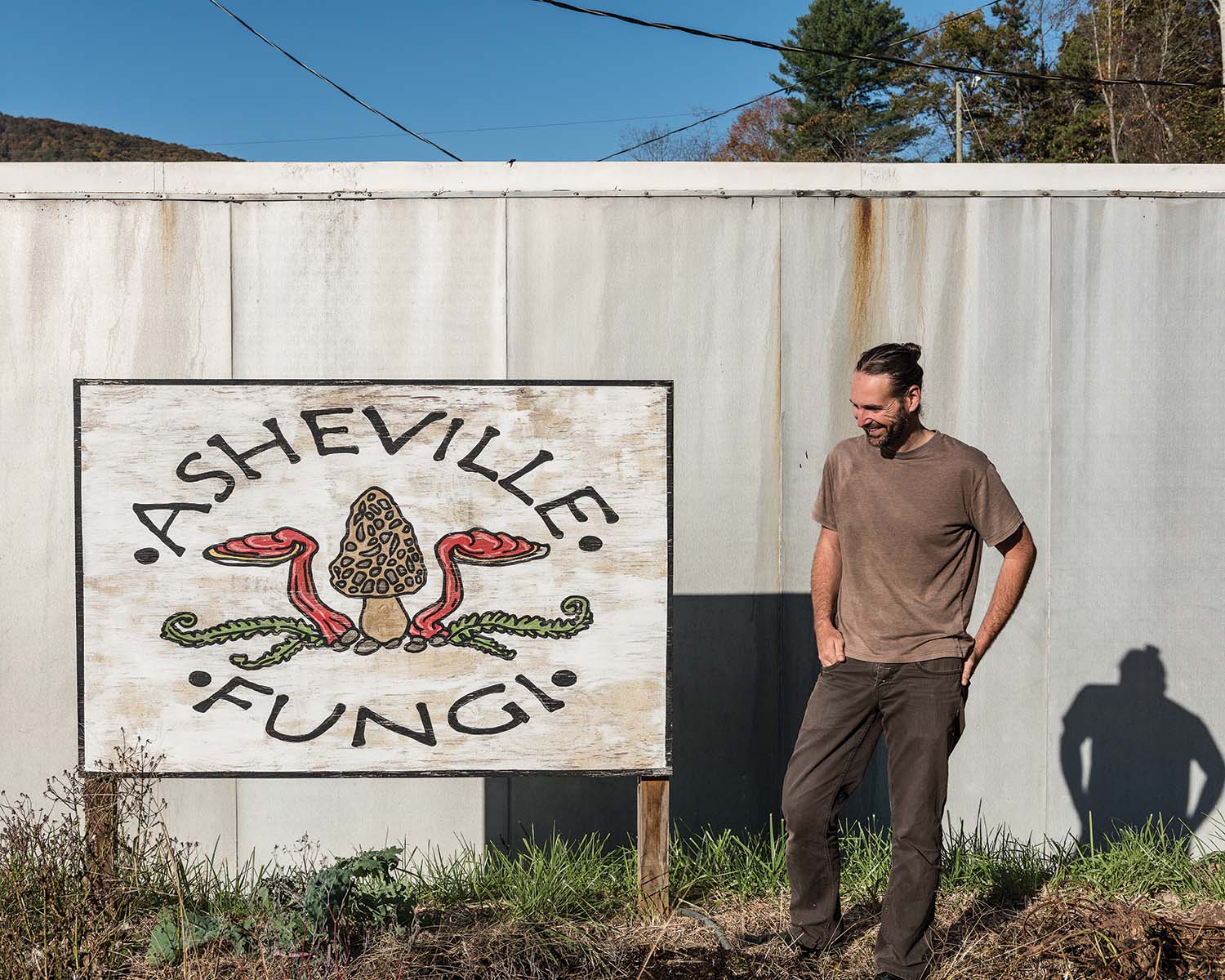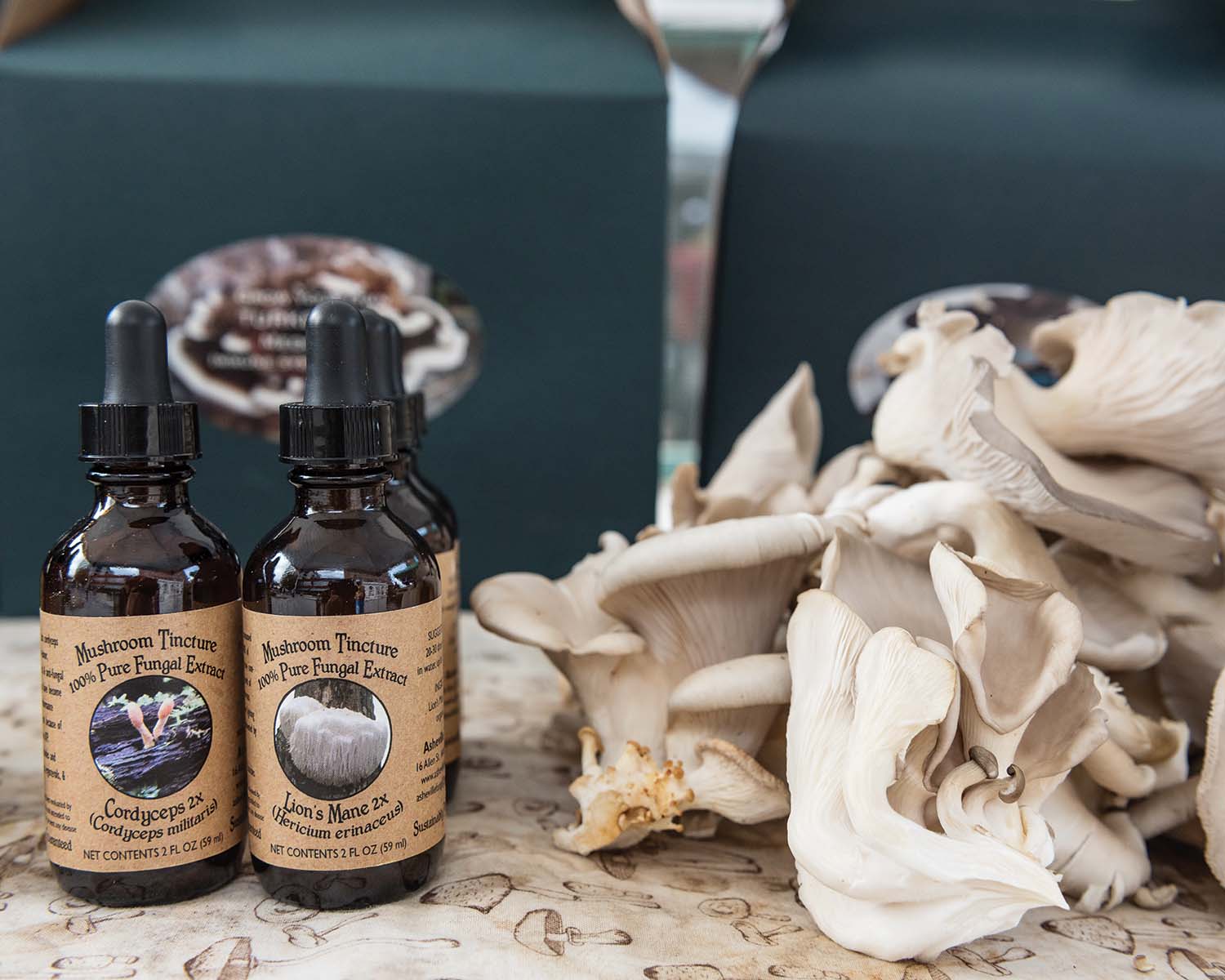
Chris Parker was barely a teenager — 14 — when he took a course on cultivating Shiitake mushrooms. “I was amazed that you could plug logs one time [with spores] and harvest mushrooms for as long as six years,” says Parker. The youthful fascination grew in a lucrative direction: he’s 40 now and cultivates culinary and medicinal mushrooms for a living at the Smith Mill Works facility in West Asheville, with a storefront across town on Thompson Street.
At Asheville Fungi, Parker grows popular Shiitakes year round. Other annuals are Chestnuts, Wood Ear, and Lion’s Mane. In the summer, he and his crew add tropical types, as well as strains of Reishi cultivated from South Carolina. Come winter, they switch to seasonal varieties such as King Trumpet — the largest of the Oyster family, it’s a meaty mushroom often used in Asian cuisine — and peppery Pioppinis. The company sells wholesale to restaurants and distribution companies; its retail component includes DIY growing kits.

What’s the main misconception about growing mushrooms?
Most people think the mushrooms have to be grown in the dark. In fact, they need light to initiate fruiting — not to continue growing, but rather to begin the growing process.
What’s the size range and length of cultivation?
The smallest we grow is Cordyceps, at about 1/8-inch diameter and about two inches tall. The largest, with clusters sometimes weighing ten pounds, is Chicken of the Woods. Some are quick to grow and can be harvested in as few as 30 days. Others, however, can take three to four years.
How about price range?
It varies widely. Cordyceps can be very expensive at around $5 to $10 an ounce … Oysters might only be $9 to $15 per pound.
Some of your mushrooms are grown as medicine. Explain.
Medicinal mushrooms contain certain compounds that can help in a number of medical applications, such as cholesterol inhibitors, immunomodulators, anti-inflammatory agents, and others. We also produce tinctures through a double extraction process — the first consists of mushrooms and alcohol and the second is the mushroom flesh and hot water. Both the compounds and tinctures can help aid in the healing process as the body recovers from a variety of ailments.
What’s your own favorite?
The Maitake. It has such a rich, nutty flavor and such a great texture. We only get them wild [for a few] weeks out of the year.
You’ve implemented some interesting eco strategies …
The waste we use in growing our mushrooms is sawdust from the lumber industry, waste that would otherwise end up on the ground. We also used cacao shells from chocolate-processing facilities. And we use straw, although it’s not technically a waste product since it has so many other applications.
When is Western North Carolina’s native mushroom season?
In our region, mushrooms have the same growing season as most plants. Morels and Oysters are the first in spring, followed by quite a variety in the summertime. In the fall, we will find Lion’s Mane, Hedgehogs, Maitake, and others. Very few species grow in the wild during the winter here, but you can find Brick Caps, Enokis, and the occasional Oyster. At home, however, you can grow them all year long.
What can people learn by taking one of your foraging walks?
I teach you how to safely distinguish between edible mushrooms and those that can make you sick. But we never know if we are going to have enough rainfall to make the walk worth it, so I typically schedule them only a week or two in advance.
Asheville Fungi’s retail shop is located at 75 Thompson St., Warehouse 200. 828-424-9267. ashevillefungi.com and on Facebook.
